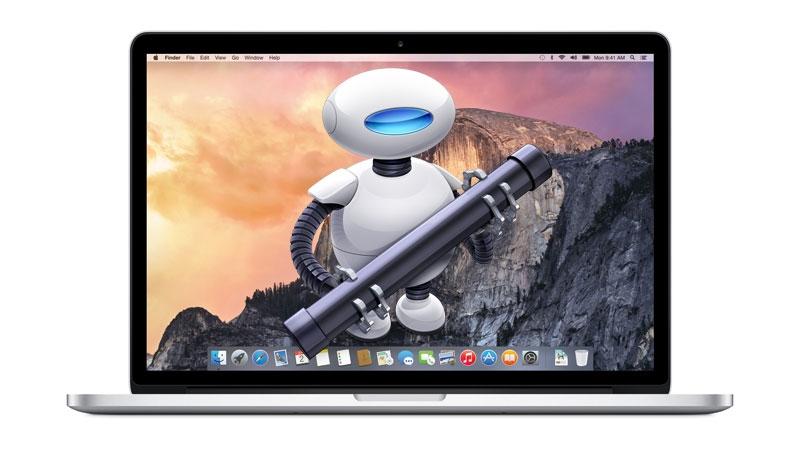Apple has been focusing on smart techniques for years, such as computational photography and Deep Fusion. These are techniques to make your photos look better, without you having to do anything yourself. A processor specially developed for this purpose performs billions of calculations per second. The iPhone is also gradually becoming smarter in other areas, and you often hear the terms artificial intelligence (AI) and machine learning. The processor responsible for this is the Apple Neural Engine. On this page we tell you more about this chip, which we first wrote about in 2017.
- What is a Neural Engine?
- In which devices?
- In which devices not?
- Why a Neural Engine?
What is a Neural Engine?
The Apple Neural Engine (ANE) is a Neural Processing Unit (NPU). This means that it is a processor that works in approximately the same way as the human brain and in which certain intelligent processes can be imitated. The Neural Engine is similar to a graphics card (GPU), but instead of speeding up graphical processes, the Neural Engine speeds up all kinds of arithmetic operations needed to perform algorithms, such as matrix multiplications. The Neural Engine is part of the System on a Chip (SoC) that you find in an iPhone. This is a multi-component package, including the GPU, modem chip for wireless connections and the Secure Enclave for security features.
Apple is certainly not the only one with a Neural Engine. Many other companies also make their own chips to speed up AI calculations. For example, Google creates the Tensor Processing Unit (TPU), which fulfills the same role in the Google Pixel smartphones.
Which devices contain a Neural Engine?
Apple introduced a Neural Engine for it in 2017, as part of the A11 Bionic chip in the iPhone 8 and iPhone X. This had 2 neural cores and could perform 600 billion calculations per second. Since then, developments have been rapid: the A15 Bionic contains 16 million neural cores and can perform 15.8 trillion calculations per second. The M-chips also contain a Neural Engine, which can perform trillions of calculations per second.
This is about trillions, not billions. If there is any confusion about the terms trillion/trillion, billion/trillion, you can consult this Wikipedia article.
You will not find a Neural Engine in these devices
Apple introduced the first devices with Neural Engine in 2017. Devices from before that time (including the iPhone 7 series) obviously do not have a Neural Engine. However, since 2017 a few devices have appeared that do not contain a Neural Engine. This includes, among other things:
- iPad 6th generation from 2018
- iPad 7th generation from 2019
- iPod touch 7th generation from 2019
- iPad Pro 2017
- Apple TV 4K from 2017
- Apple Watch (all models)
- Intel-based Macs (all models)
Why a Neural Engine?
Applications such as artificial intelligence and machine learning are becoming increasingly important and there are countless ways to use them: from taking better photos to better predicting your energy consumption. Great leaps forward have been made in the field of neural networks. These try to imitate the human brain with algorithms. But because computers do not work exactly like a human brain (things such as intuition and empathy are difficult to imitate), special chips have been built for them that focus on very specific processes.
Apple released the Neural Engine in 2017 to perform these compute-intensive operations in a more energy-efficient manner. It can be used for video analysis, speech recognition, image editing and more. Machine learning ensures that the chip is trained, so that subsequent operations can be performed even faster.
Third-party developers can also benefit from this. Initially (with the A11 Bionic), the Neural Engine was only used for Apple’s own applications such as Animoji, where digital characters imitate your facial expressions. It has also been used from the start for fast facial recognition with Face ID.

The A12 could ‘only’ perform 5 trillion calculations per second, while today more than 15 trillion are achieved.
Since the introduction of Core ML (a framework for machine learning), external developers can also use it, where they can directly put the Neural Engine to work. The advantage of a Neural Engine is that it works faster and more efficiently than the CPU (main processor) and the GPU (graphics chip). This means that the iPhone continues to respond smoothly, even if you are performing other tasks. The iPhone is less likely to overheat and drain the battery than if the CPU and GPU were enabled for these compute-intensive tasks.
If you are a developer and would like to know more about this topic, please also consult this GitHub page, which is regularly updated with new information! If you want an overview of all Apple chips and processors, we have a separate page for that. Or see what the Secure Enclave does in your iPhone.













